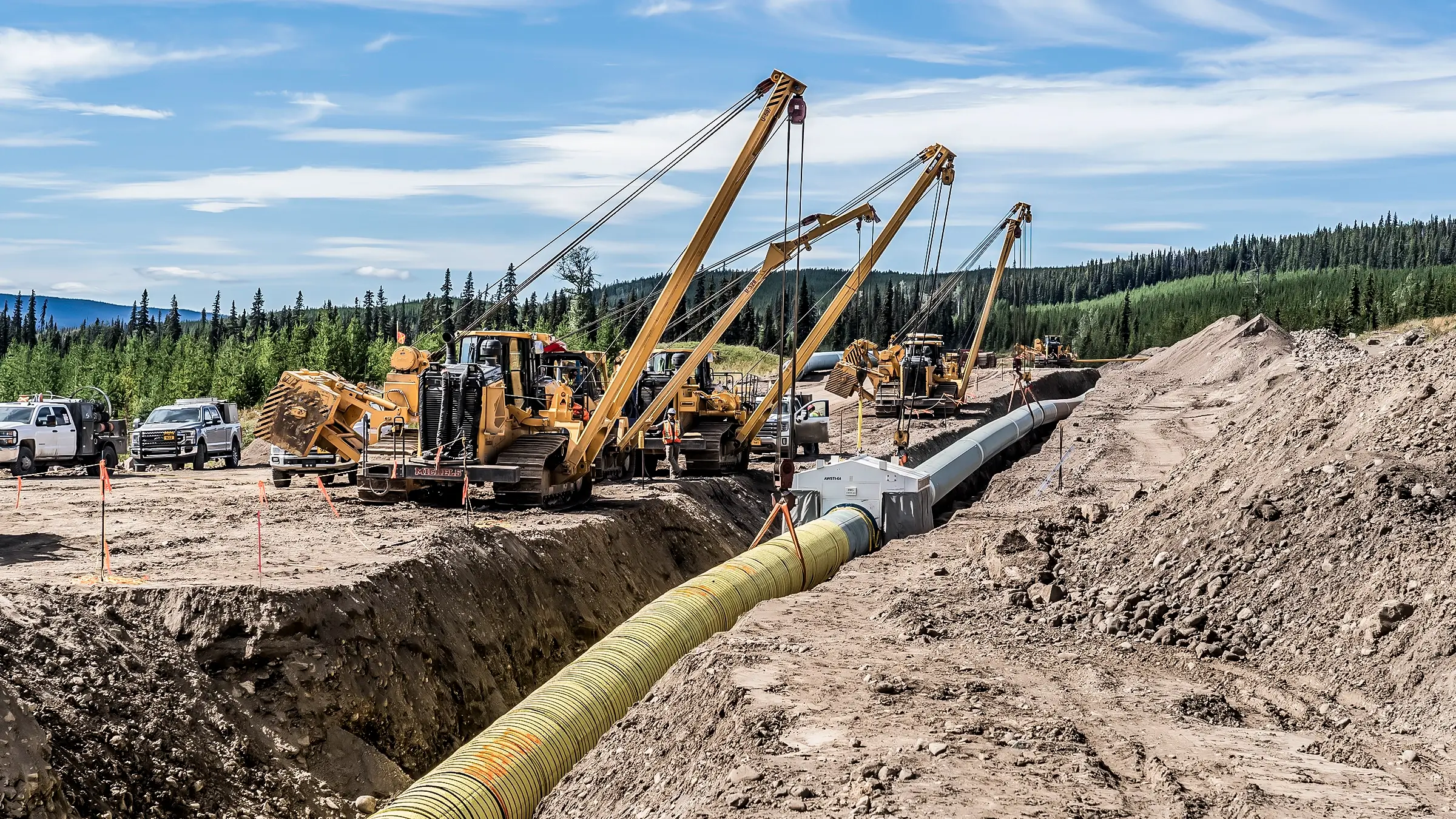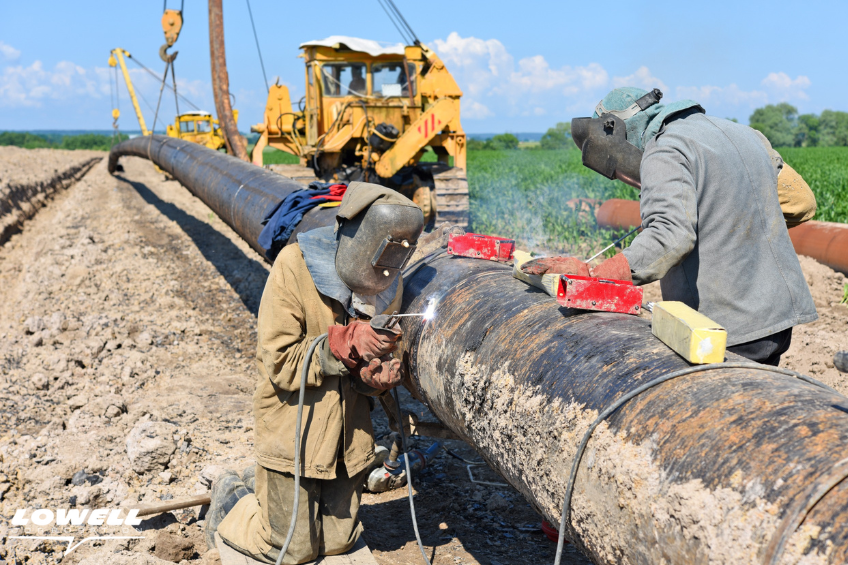The Future of Infrastructure: What Creek Pipe Company LLC Is Doing Differently
Wiki Article
Unveiling the Newest Innovations in Pipes for Reliable Water Management
The development of pipe technology is reshaping water administration techniques. Current technologies, particularly in smart sensor innovation and leak detection systems, guarantee boosted performance and sustainability. These developments enable real-time tracking and predictive maintenance, dealing with critical water challenges. As communities undertaking for resilience, the duty of eco-friendly materials ends up being increasingly significant - Creek Pipe Midland. What various other advancements are on the perspective that could even more change our approach to water resource management?Improvements in Smart Sensing Unit Technology
As water administration systems come to be increasingly complex, developments in wise sensing unit technology play a necessary function in improving performance and sustainability. These sensors enable real-time tracking of water quality, circulation prices, and stress levels, providing crucial data for effective management. By integrating Net of Things (IoT) abilities, smart sensing units help with remote access and information analytics, enabling drivers to make informed choices swiftly.Moreover, anticipating upkeep becomes possible through using sophisticated formulas that evaluate sensing unit information to forecast prospective failures before they happen. This positive strategy reduces downtime and decreases repair work costs. In addition, smart sensors add to the preservation of water resources by discovering leakages and abnormalities in the system, guaranteeing prompt action is required to alleviate waste. Generally, the application of clever sensor modern technology in water administration pipelines marks a considerable action in the direction of enhancing resource use and advertising ecological sustainability.Eco-Friendly Products for Lasting Pipes
Innovative techniques in water monitoring pipelines progressively incorporate green materials to boost sustainability. These materials purpose to minimize environmental effect while keeping sturdiness and performance. Biodegradable plastics, as an example, are obtaining grip as viable options to conventional PVC, lowering long-lasting waste in land fills. Additionally, recycled materials, such as redeemed rubber and steel compounds, are being made use of to develop robust pipe systems that considerably reduced carbon footprints.Moreover, bio-based products originated from renewable energies are emerging as appealing choices, providing both resilience and lowered reliance on nonrenewable fuel sources. Producers are also discovering cutting-edge coverings that improve deterioration resistance while staying environmentally benign. These advancements not only promote a round economic situation however additionally align with international sustainability goals. As water shortage becomes a pressing issue, the fostering of green products in pipe building and construction stands for a crucial action towards liable water management and resource conservation.
Real-Time Surveillance and Data Analytics
While standard water management systems frequently depend on regular evaluations, the assimilation of real-time surveillance and data analytics has changed the landscape of pipeline monitoring. This ingenious approach allows operators to continuously track water pressure, high quality, and flow, promoting prompt reactions to prospective issues - Creek Pipe Company LLC. By leveraging sophisticated sensors and IoT innovation, information is gathered and evaluated immediately, providing actionable understandings that enhance decision-making processes.Real-time analytics not just boosts operational efficiency yet additionally helps in resource allocation, making sure that water circulation is enhanced. Anticipating analytics can anticipate demand patterns, permitting for aggressive actions to be implemented, consequently decreasing waste and improving sustainability efforts. The capability to envision information via control panels help in identifying abnormalities and patterns, which is important for preserving the stability of water supply systems. This shift in the direction of real-time tracking represents a considerable advancement in guaranteeing the effectiveness and sustainability of water management pipes.Innovations in Leak Discovery Systems
The rise of real-time surveillance has paved the method for innovations in leak discovery systems within water administration pipes. Modern innovations, including acoustic sensors and fiber optic cords, enable drivers to determine leakages with unprecedented precision. Acoustic sensing units, for example, detect acoustic waves produced by escaping water, permitting prompt place pinpointing. In comparison, fiber optic systems use temperature level adjustments along the pipe to reveal abnormalities indicative of leaks.Additionally, artificial intelligence formulas are being utilized to analyze information collected from these sensors, boosting anticipating maintenance capabilities. By processing historic information and identifying patterns, these systems can anticipate potential leakage places before they take place, decreasing water loss and minimizing repair costs.Furthermore, combination with geographic details systems (GIS) enables far better visualization and monitoring of pipe networks, enhancing the reaction to detected leakages. Jointly, these innovations indicate a transformative shift in exactly how water administration systems deal with leak detection.Boosted Toughness and Long Life of Pipeline Materials
Innovations in pipeline materials are significantly boosting the toughness and durability of water management systems. Innovative materials, such as high-density polyethylene (HDPE) and enhanced concrete, are confirming to be extra resistant to corrosion, pressure, and ecological stress factors. These modern-day products not only prolong the life-span of pipelines yet also decrease maintenance expenses and the frequency of repairs.Additionally, improvements in composite materials, which combine various compounds to maximize efficiency, are being utilized for their exceptional strength-to-weight proportion and flexibility. This enables pipelines to much better stand up to severe weather and ground movements.Moreover, the intro of protective finishings better enhances the resilience of pipelines against chemical degradation and physical wear. Consequently, water administration systems are becoming a lot more sustainable and dependable, guaranteeing the reliable shipment of water sources while reducing the ecological impact connected with constant pipeline substitutes.Assimilation of IoT in Water Circulation Networks
As water circulation networks progress, the assimilation of the Internet Creek Pipe Pipeline Construction of Things (IoT) is changing the means water sources are taken care of and kept track of. Smart sensors and connected devices allow real-time data collection on water top quality, pressure, and circulation, facilitating proactive management of infrastructure. This innovation permits for prompt detection of leaks and abnormalities, decreasing water loss and minimizing functional costs.Furthermore, IoT technology sustains anticipating maintenance by assessing usage patterns, which aids utilities prepare repair work and upgrades a lot more successfully. Enhanced interaction between tools assurances seamless data transmission, enabling boosted decision-making based upon exact, current information.Additionally, the combination of IoT promotes water conservation efforts by supplying consumers with understandings right into their usage habits, motivating even more liable use. Overall, the IoT transforms water circulation networks, promoting performance and sustainability in water management methods.Situation Researches: Success Stories in Water Monitoring Solutions
Many communities and companies have efficiently executed cutting-edge water monitoring remedies, showcasing the effectiveness of contemporary technologies in resolving water shortage and distribution difficulties. One noteworthy instance is the city of San Diego, which incorporated advanced metering facilities (AMI) to keep an eye on water use in real-time, resulting in a 10% decrease in usage. Creek Pipe Texas. The water authority in Cape Town took on a smart leakage discovery system that recognized and repaired leaks quickly, considerably decreasing water loss throughout the extreme dry spell of 2017. In Australia, the usage of recycled water systems in urban locations has actually proven successful, permitting sustainable irrigation practices and decreased demand on potable water resources. These case research studies illustrate that by leveraging modern technology and cutting-edge methods, communities can improve their water administration methods, ensuring long-lasting sustainability and resilience despite expanding water challengesOften Asked Inquiries
Just how Do These Innovations Influence Water Utility Costs?
The advancements in pipe innovation significantly reduce water loss and operational ineffectiveness. Water energies experience lowered upkeep and production expenses, ultimately leading to reduced expenditures for consumers and improved sustainability in water management methods.What Are the Ecological Influences of Pipeline Installation?
The environmental impacts of pipe installment can consist of environment interruption, dirt erosion, and possible water contamination. Nonetheless, modern-day techniques intend to alleviate these results, promoting lasting practices in building and construction and long-term environmental preservation.Are There Federal Government Rules Affecting Pipeline Innovations?

Federal government policies substantially affect pipeline advancements, mandating compliance with ecological criteria and safety procedures. These laws intend to minimize ecological threats while promoting developments in technology, eventually forming the future of pipe facilities and water administration practices.

Just How Can Consumers Gain From These Pipeline Innovations?
Customers can take advantage of these pipe advancements via boosted water high quality, reduced prices, enhanced reliability, and boosted access to tidy water. Technologies cause extra efficient source management, inevitably fostering lasting practices within neighborhoods.What Future Fads Can We Anticipate in Water Management Pipelines?
Future patterns in water management pipes may include increased automation, smart monitoring innovations, and sustainable materials. These developments aim to boost effectiveness, minimize leakages, and improve general water high quality, ensuring source conservation for future generations. As water circulation networks progress, the assimilation of the Web of Points (IoT) is transforming the method water sources are handled and kept an eye on. Various districts and companies have successfully carried out ingenious water administration remedies, showcasing the performance of contemporary innovations in dealing with water scarcity and distribution difficulties. The water authority in Cape Community adopted a smart leakage detection system that identified and repaired leakages rapidly, substantially decreasing water loss during the severe dry spell of 2017. In Australia, the use of recycled water systems in urban locations has verified successful, allowing for sustainable watering methods and reduced need on safe and clean water resources. Customers can benefit from these pipeline developments with enhanced water quality, decreased prices, improved reliability, and increased accessibility to tidy water.Report this wiki page